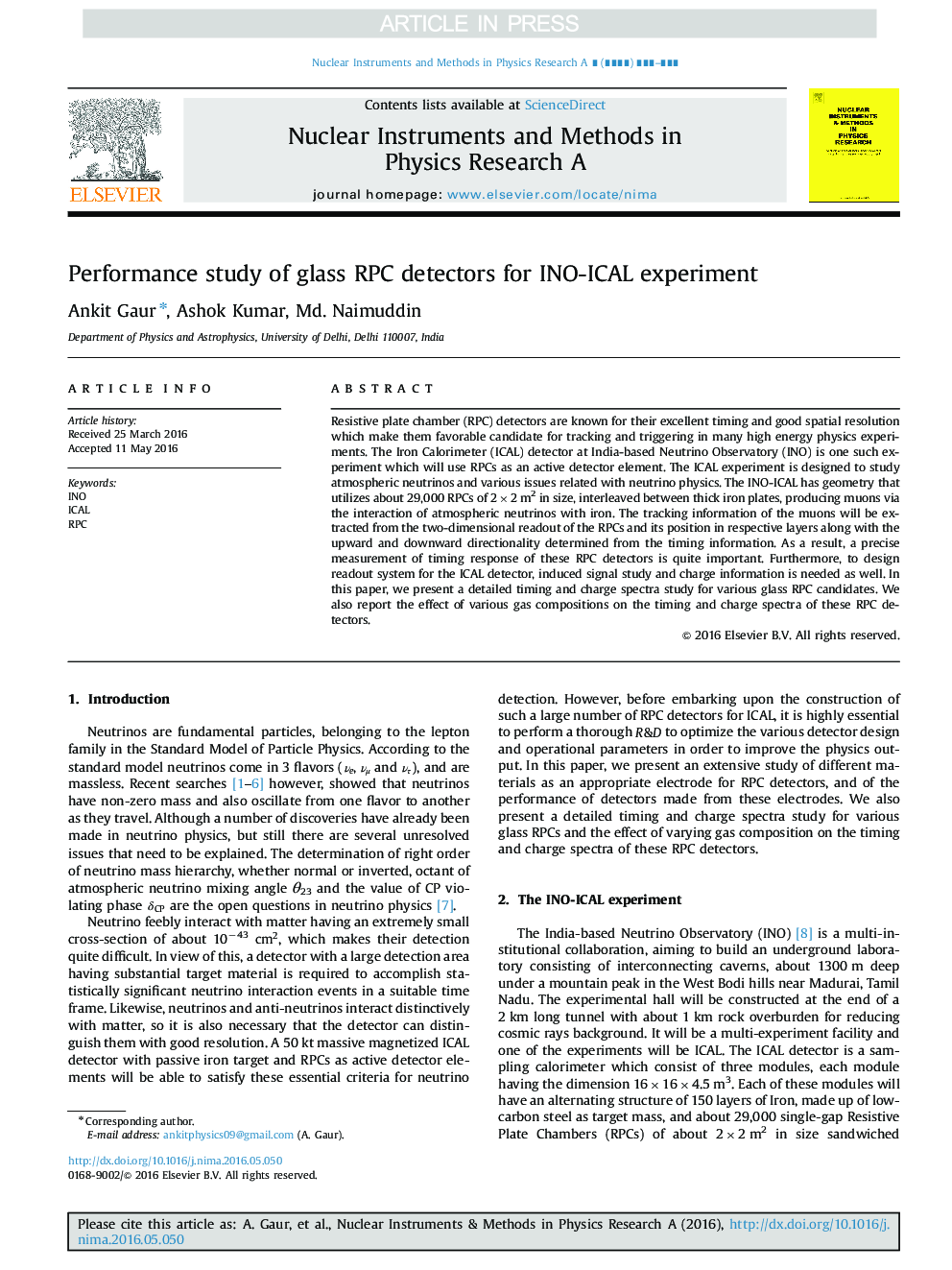| Article ID | Journal | Published Year | Pages | File Type |
|---|---|---|---|---|
| 5492890 | Nuclear Instruments and Methods in Physics Research Section A: Accelerators, Spectrometers, Detectors and Associated Equipment | 2017 | 4 Pages |
Abstract
Resistive plate chamber (RPC) detectors are known for their excellent timing and good spatial resolution which make them favorable candidate for tracking and triggering in many high energy physics experiments. The Iron Calorimeter (ICAL) detector at India-based Neutrino Observatory (INO) is one such experiment which will use RPCs as an active detector element. The ICAL experiment is designed to study atmospheric neutrinos and various issues related with neutrino physics. The INO-ICAL has geometry that utilizes about 29,000 RPCs of 2Ã2Â m2 in size, interleaved between thick iron plates, producing muons via the interaction of atmospheric neutrinos with iron. The tracking information of the muons will be extracted from the two-dimensional readout of the RPCs and its position in respective layers along with the upward and downward directionality determined from the timing information. As a result, a precise measurement of timing response of these RPC detectors is quite important. Furthermore, to design readout system for the ICAL detector, induced signal study and charge information is needed as well. In this paper, we present a detailed timing and charge spectra study for various glass RPC candidates. We also report the effect of various gas compositions on the timing and charge spectra of these RPC detectors.
Related Topics
Physical Sciences and Engineering
Physics and Astronomy
Instrumentation
Authors
Ankit Gaur, Ashok Kumar, Md. Naimuddin,
